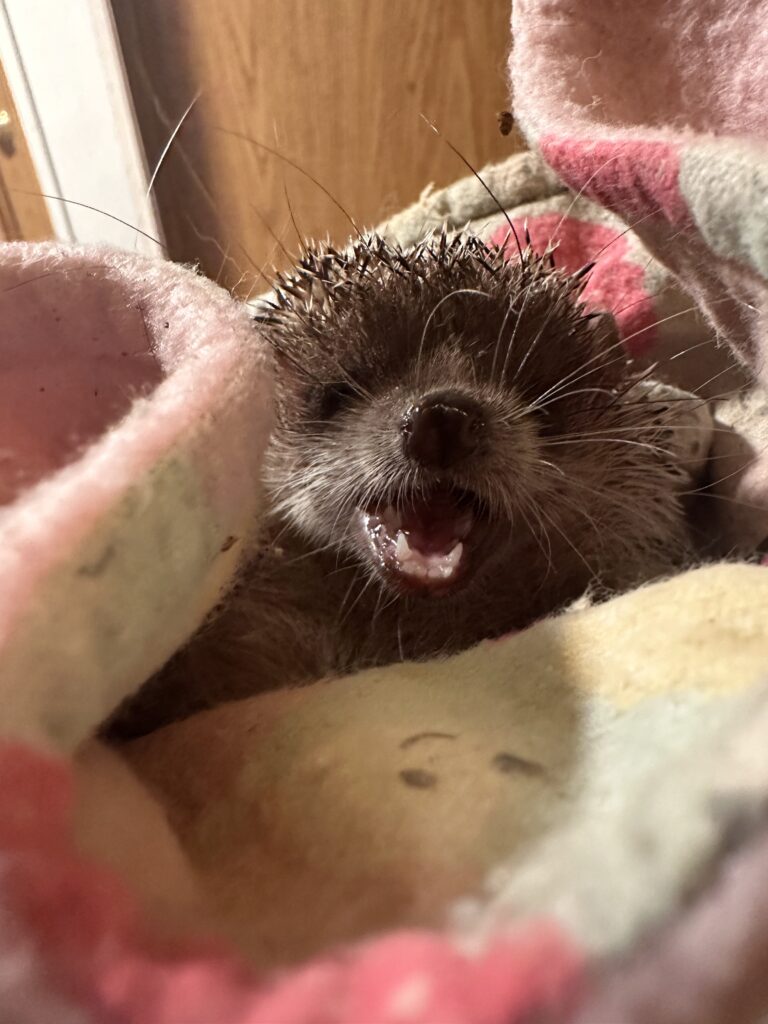




Please continue to do further research on these animals as they are an exotic species and information is always changing.
Scientific Name: Echinops telfairi
Lifespan: 5-7 years in captivity
Size: 5-9 inches Weight: 175-350 grams
Temperature and Humidity:
- Temperature: Maintain a temperature range of 70°F to 80°F.
- Humidity: Keep humidity around 40-60%. A hygrometer can help monitor this.
Lighting:
- Provide a natural light cycle with 12 hours of light and 12 hours of dark.
- UVB lighting is beneficial but not mandatory.
Hiding Places:
- Include various hiding spots using caves, logs, or commercial hides. Tenrecs feel secure when they can retreat.
Bedding:
- Provide at least 3-5 inches of substrate for burrowing.
Primary Diet:
- Insects (crickets, mealworms) should be the mainstay of their diet. Aim for variety in protein sources.
- Offer fruits and vegetables occasionally (e.g., bananas, sweet potatoes, leafy greens).
Commercial Food:
- High-quality, protein-rich pellets designed for insectivores can supplement their diet.
Water:
- Fresh water should always be available in a shallow dish. Change daily.
Handling:
- Use both hands to support their body and avoid gripping them too tightly. Let them explore your hands.
Social Interaction:
- They can be housed alone or in small female groups. Monitor interactions to prevent aggression.
